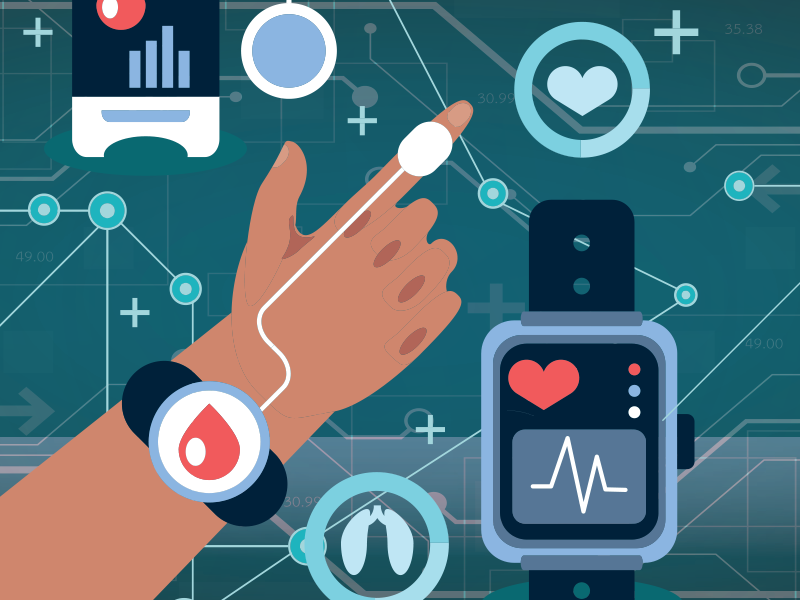
This article appears in the June 2022 issue of Investment Executive. Subscribe to the print edition, read the digital edition or read the articles online.
Health and fitness monitoring technology is one way of engaging with life insurance clients, but insurers aren’t yet making actuarial decisions based on the data — which some clients may be reluctant to share.
Whether the device is a Fitbit, Galaxy Watch Active, mobile app or another device, some tech-savvy life and health insurers are encouraging clients to share wellness data, such as physical activity and what they eat.
A case in point is Foresters Financial. The Toronto-based insurer launched a mobile app — dubbed Foresters Go — in Canada in 2021 and in Britain in May 2022. Foresters tracks and scores participating clients on their physical activity, “mindfulness” (measured through pulse and breathing rate, for example), nutrition and sleep.
“It gives an opportunity for insurance advisors to offer some additional value beyond the death benefit for their clients,” said Juanpaolo Mercado, vice-president of sales, Asian markets and Western Canada, with Canada Protection Plan, a Foresters subsidiary.
Insurance advisors can “strengthen their own value proposition by educating consumers on how this turns their life insurance into a broader benefit-driven device,” Mercado said. That, in turn, “forges a stronger client relationship.”
Life and health insurers’ use of wearables is similar in concept to auto insurers that use telematics, said Jonathan Weir, a partner with KPMG Canada LLP.
But unlike usage-based auto insurance — in which driving behaviour is one factor in pricing — there’s no indication that life insurers are using wearable health monitors to make underwriting decisions.
Foresters Go, for example, is used solely as a member benefit, said Nicole Gourley, global chief membership officer with Foresters Financial. Data from the platform isn’t leveraged for underwriting or distribution.
While health monitoring technology gives carriers “additional data points,” said Michael Adams, associate director of life/health insurance ratings with A.M. Best Co. Inc., the industry doesn’t have enough data yet to make underwriting decisions.
Jamie Tucker, head of North American life insurance with Fitch Ratings Inc., agreed.
“Perhaps over time, as the data builds up, it’ll allow insurers to make more sound actuarial conclusions as they look at their experience with [policyholders using wearables] versus those not wearing or using this technology,” Tucker said.
Brad Ellis, head of North American health insurance with Fitch Ratings, said there also may be issues with the data’s accuracy. “There’s outright fraud on the part of the policyholder in some instances,” he said. “I’ve heard that there are actually apps that come along and simulate steps.”
For now, insurers are using wearables to engage clients and encourage healthier habits.
An example of the concept is Manulife Financial Corp.’s Vitality program, said Paul Jones, senior manager with KPMG Canada: “This is a space that I think the other large insurers in Canada are definitely exploring.”
The role life insurance agents can play includes explaining how clients can earn rewards through these types of programs, Tucker said. In other words, life agents can add value by discussing the pros and cons.
“I think the major ‘con’ would just be someone who has concerns around privacy and not understanding how this data will be used,” Tucker said.
Clients would have to trust insurers to keep their data secure from a third party with whom the client doesn’t want to share their data, Jones said.
“That’s significant for insurers because the traditional relationship between policyholders and insurers isn’t always really strong in terms of perception,” Jones cautioned. “There’s a common perception out there that insurers aren’t going to act in the best interest of the consumer.”
Weir said health data is normally shared with a third-party technology firm that hosts the information in the cloud.
That third-part y tech firm “ultimately makes some calculations and computations and shares a small subset of information or insight based on my raw data with my insurance carrier — and maybe my broker,” Weir said.
Some data shows that older clients are less willing to share data with insurers than their younger counterparts, Jones said.
“Consumers’ willingness to share their data is, in aggregate, increasing. But there are strings attached. They’re becoming more sophisticated. Consumers are realizing that their data has value and are expecting to see that value returned to them in their pocket, so to speak,” Jones said.
Ellis said there is not enough accurate data out there to calculate user uptake for wearables.